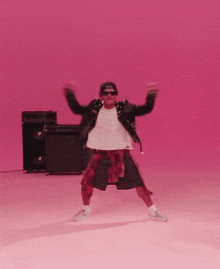Who is Addison Rae—and why does she matter? Once just a Louisiana college student posting dance videos on TikTok, Addison Rae has rapidly become one of the most recognizable faces of Gen Z fame. We will look at her rise to fame, her impact on music, and why her rebrand strategy worked so well.
Let us slide into your dms 🥰
Get notified of top trending articles like this one every week! (we won't spam you)The TikTok Era
Addison Rae’s story begins like many others, where in 2019 she experimented with lip-syncs and dance trends on TikTok. Addison, then a freshman at Louisiana State University majoring in broadcast journalism, began posting videos for fun. Quickly, what started as casual content turned into a full-time phenomenon.
By late 2019, she had dropped out of Louisiana State University, moved to Los Angeles, and signed with talent agency WME. Just three months after joining the app, Addison had hit 1 million followers, making her the 5th most followed user on the app. Her following only continued to grow as she became one of the first members of the Hype House—a Los Angeles-based content collective where young TikTok creators lived, collaborated, and filmed videos together. Launched in late 2019, the Hype House quickly became a cultural phenomenon, blending reality-show energy with social media virality. Addison’s viral success on TikTok made her one of the most recognizable faces of the platform rapidly; she was being featured in magazines, invited to red carpet events, and recognized by celebrities. Her TikTok popularity opened doors to the entertainment industry.

Take the Quiz: Which Bruno Mars Jam Matches Your Vibe?
Find out which Bruno Mars hit perfectly captures your unique style and energy!
Trying to Evolve
Around 2021, Addison started trying to break out of the “TikTok star” box and be taken seriously as a multi-dimensional entertainer. She made her acting debut in the Netflix film He’s All That, a gender-swapped remake of the 1999 teen classic She’s All That. While the movie topped Netflix’s charts globally, it was widely criticized for its script, acting, and overall execution. Addison, in particular, faced heavy backlash. Critics and social media users questioned her acting skills, accusing her of being handed opportunities simply because of her online fame.
That same year, she launched her music career with the release of her debut single, “Obsessed.” Like her acting, the song was largely dismissed as another attempt by a TikTok star to force her way into pop culture.
In addition to acting and music, Addison also ventured into the beauty industry with her cosmetics line, Item Beauty. Launched with high hopes to establish herself as a serious entrepreneur, the brand struggled to gain popularity in a competitive market saturated by established and emerging beauty influencers. Item Beauty failed to become a breakout success, highlighting the challenges Addison faced in diversifying her career.
This period was a test of resilience. Addison’s efforts to evolve beyond viral dances were met with mixed reactions. Yet, even amid setbacks and negative press, she demonstrated a clear ambition to grow, refusing to be defined solely by her TikTok origins.
The Turning Point
No matter what Addison tried—acting, music, or beauty—people just weren’t ready to accept her beyond the “TikTok star” label. So, while feeling stuck, she went back to the drawing board. She pulled back from her previous relentless TikTok posting schedule—going from multiple daily videos to far fewer—and focused on refining her image. She dove deep into songwriting, spending long hours in the studio. It was here she met Charli XCX in West Hollywood. Their chemistry was instant, as the two bonded over their shared love for pop music. Their collaboration quickly became a reality, and it marked the beginning of Addison’s first major music project. Yet, life had other plans. She paused work on the album to star in Thanksgiving—a slasher film—and to film her Snapchat reality show, Addison Goes Home. During that time, rough demos of her songs mysteriously leaked online, leaving Addison disheartened. Surprisingly, these leaks worked in her favor. Tracks like 2 Die 4 (featuring Charli XCX), Nothing on But the Radio, and I Got It Bad began circulating on TikTok—not because Addison promoted them, but because users were genuinely impressed by the music. The reaction was different this time. Comments were no longer about her dancing or viral status; they were about the sound, the vibe, the music. People were shocked that the music they were hearing came from Addison Rae. Strategically, she quickly leaned into the momentum officially releasing the leaked songs as part of her debut EP, AR.
In interviews around the EP’s release, Addison shared how this project represented a rise out of the confines of her TikTok-born image. She was no longer just an influencer dabbling in music; she was a pop artist with vision, collaborators like Charli XCX, and a growing fanbase that was beginning to see—and hear—her differently.
How Addison Rae Built Her Debut Album
Despite Addison growing presence in music and entertainment, there wasn’t initially a flood of music labels rushing to sign her. That changed in early 2024 when Addison met with Ron Perry, the CEO of Columbia Records. Interestingly, this connection came through her boyfriend, a music producer, which helped open the door. Addison arrived prepared—not with new demos, but with a binder and a detailed presentation deck. It included mood boards, word clouds, and a clear vision of her music identity. Words like intentional, intense, dance, glitter, and heart conveyed the energy and aesthetic she wanted to bring to her music career.
Impressed by her concept and determination, Perry signed Addison to Columbia Records. The two immediately began working on her debut album, marking a new chapter in her evolving career.
Around the same time, Addison reconnected with Charli XCX, who invited her to feature on the remix of “Von Dutch.” This collaboration was pivotal for Addison, not just professionally but creatively. Charli encouraged Addison to trust her instincts and be confident in her songwriting, advice that deeply influenced Addison’s approach to her music. A wider audience started to support Addison, with fans started to see her not just as an influencer trying music, but as a legitimate pop artist with real potential.
By June 2024, after months of writing and producing, Addison began teasing her debut project with a striking video of herself walking underwater in stilettos—her song Aquamarine playing in the background. Two months later, August 2024, Addison Rae released Diet Pepsi, her first single to chart on the Billboard Hot 100—and it was a smashing success. Critics were genuinely surprised by the song’s quality, praising its nostalgic, early Lana Del Rey vibe and stylish visuals. Diet Pepsi not only attracted new fans but also firmly planted Addison’s flag in the pop music world.
She followed up with Aquamarine, a track with a European trance-like sound that showcased her versatility and willingness to experiment beyond mainstream pop. As her sound evolved, so did the support. Her fanbase grew more and more. On Valentine’s Day 2025, Addison dropped her third single, High Fashion. Although it didn’t chart, it was well received and further demonstrated her musical range, helping shift public perception from dismissive to intrigued.
Addison made her Coachella debut around April 2025, performing twice: once with Arca on a remix of Aquamarine titled Arcamarine, and again during Charli XCX’s set for the Von Dutch remix—the biggest crowd she’d ever played for.
Next came Headphones On, a single that debuted at number 87 on the Hot 100. The song, which touches on themes of tuning out the noise and coping with her parents’ divorce, offered listeners a more intimate glimpse into Addison’s life and artistry. As anticipation for her debut album grew, Addison officially announced that Addison—her first and last album under the name “Addison Rae”—would be released on June 6, 2025. The album cover perfectly reflected the nostalgic, early 2000s influences present in her music, visualizing the mood boards and concepts she’d once presented in her label pitch.
The album rollout was a masterclass in sustained creative marketing: before the release, twelve track titles were teased through a global scavenger hunt of billboards, engaging fans worldwide. By the time the album dropped, five singles had been released—each distinct in sound, painting a multifaceted portrait of Addison as an artist.
Her fifth single, Fame is a Gun, arrived just days before the album launch. Critics and fans alike drew comparisons to the atmospheric style of Charli XCX’s Sucker era, signaling Addison’s continued evolution and willingness to experiment.
Throughout this journey, industry heavyweights like Charli XCX, Rosalía, Ariana Grande, Hayley Williams (Paramore), Finneas, and Billie Eilish have publicly praised Addison’s musicality and creative vision, marking her as a serious artist with momentum.
When Addison finally dropped on June 6, 2025, it exceeded expectations. The album was a great statement, with equal parts vulnerability, glittery nostalgia, and pop experimentation. Across twelve tracks, Addison blended Y2K-inspired synth-pop with emotional lyricism and sharp production, offering an honest reflection on fame, identity, heartbreak, and self-discovery. Critics praised the project for its polish and sincerity, noting that Addison had not only found her voice but was using it with purpose. Fans embraced the album wholeheartedly, flooding social media with personal interpretations of lyrics, favorite visuals, and stories of how the songs resonated with them. With one carefully crafted record, Addison Rae had rewritten her narrative, proving she wasn’t just passing through pop music—she had arrived.
Rebrand master
Addison Rae’s rebrand wasn’t about proving she was “authentic” by conventional standards—it was about embracing the fantasy, performance, and theatricality that define pop itself. Rather than trying to shed the “TikTok star” label through quiet seriousness, she leaned into maximalism: campy visuals, conceptual aesthetics, and hyperfeminine iconography that echoed the exaggerated personas of early 2000s pop.
Like this, Addison’s rebranded herself into a pop artist. She strategically shifted her identity, making a great public perception and achieving genuine cultural impact. Once dismissed as “generic influencer music,” she’s now one of the most named upcoming pop stars.
To dive deeper into Addison Rae’s personal journey, check out this interview, which I found so interesting. It's a great follow-up for anyone curious to hear directly from her.
In an industry where image can be as powerful as sound, Addison Rae proved herself not just as an entertainer, but as a master strategist. Her rebrand wasn’t a lucky break or a passive evolution—it was a deliberate, high-concept transformation. Addison Rae didn’t just reintroduce herself—she built a world, invited people in, and made them stay.








